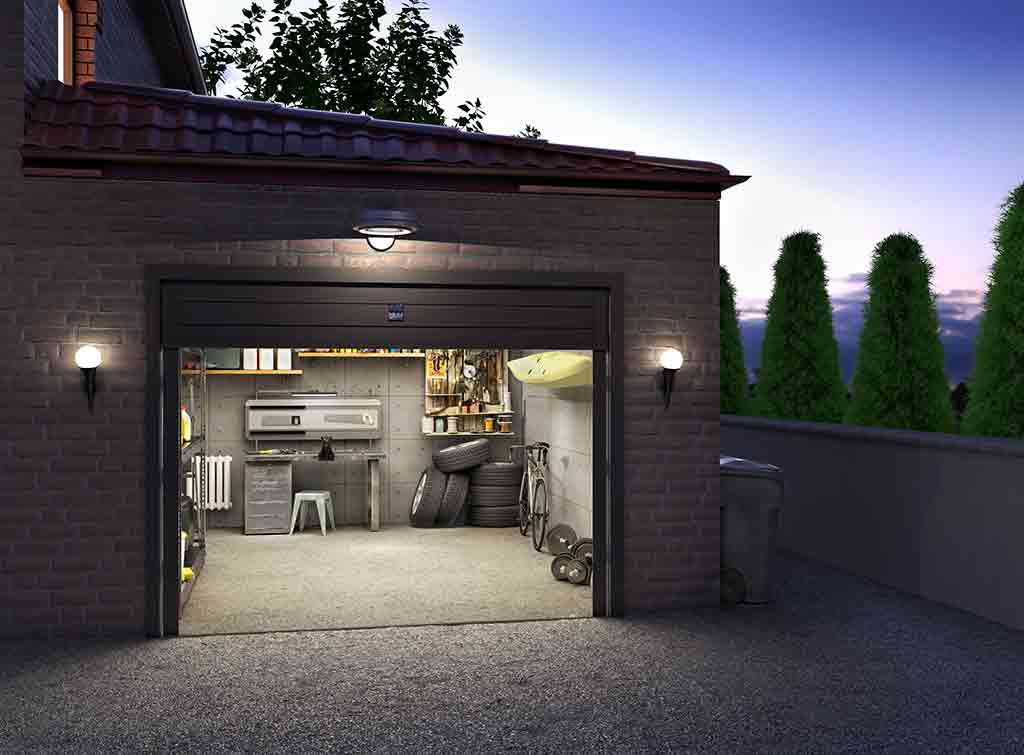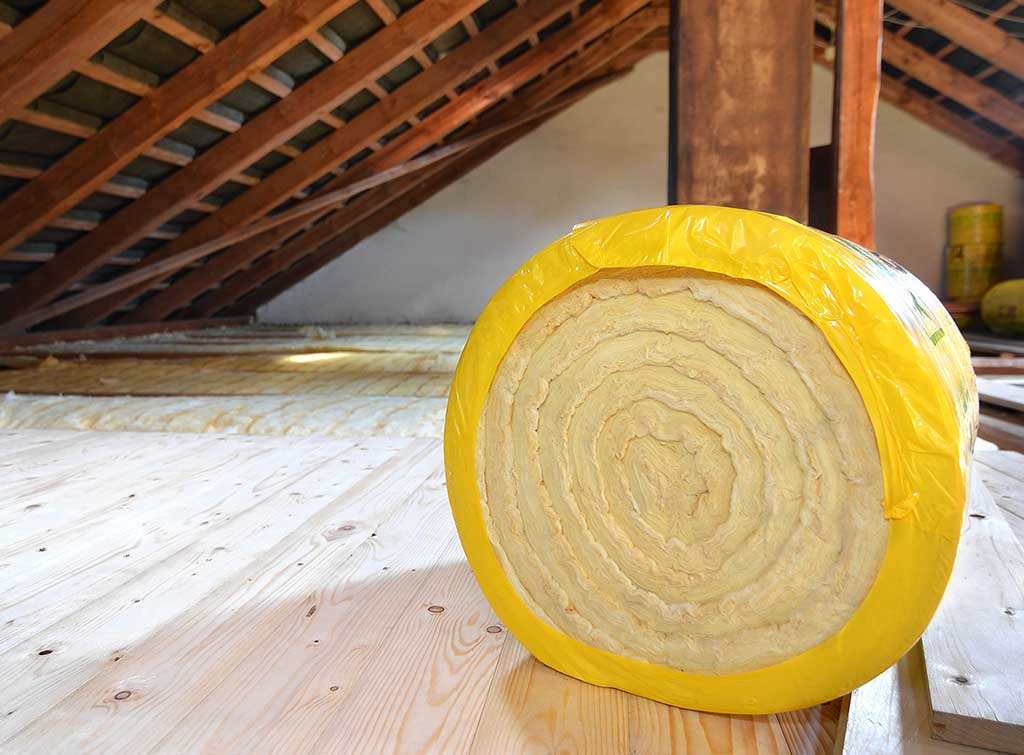Blog>Planning Guides>A complete guide to log-burning stoves
Last updated: 28 June 2024
A complete guide to log-burning stoves
Log burners have grown in popularity with UK homeowners in recent years, but there's much to consider before leaping ahead with this on-trend heating option. We explore all you need to know.
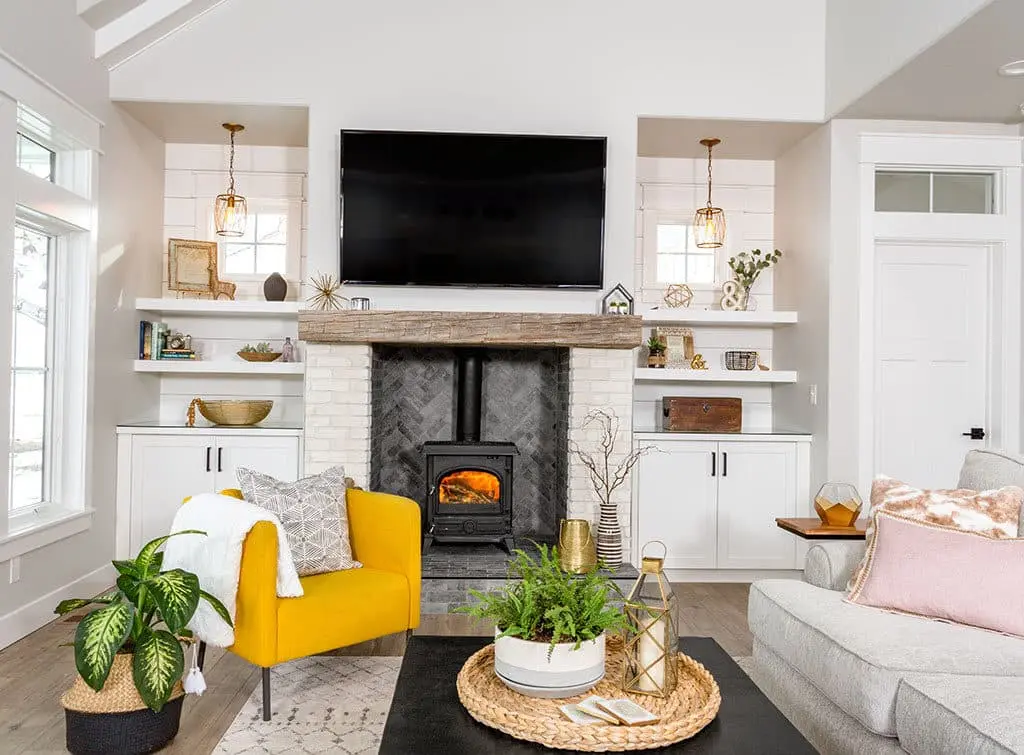
Log-burning stoves have become hugely popular in UK homes thanks to Instagram and rising energy prices. If you're considering one for your home, you're in the right place to find out all you need to know.
We look at the pros and cons of log-burning stoves, the types of stoves available (and how to select the best option for your property); the associated costs, rules and regulations to be aware of, and tips on use and maintenance.
See the tradespeople we've checked and recommend for your job
What are wood-burning stoves?
Wood-burning stoves are self-contained heating appliances that produce heat through burning wood.
The heat generated from the fire within the stove warms the surrounding space, while any smoke exits via the flue.
Types of log-burning stoves
Three of the most popular types of wood-burning stoves are radiant, convection, and multi-fuel.
Radiant stoves
Radiant stoves radiate heat through the glass door and stove body to the surrounding air. They're ideal for creating cosy areas in smaller rooms.
Convection stoves
Convection stoves are clad with a secondary outer layer - the air within which is heated and then distributed around the room.
They make a good choice for an open-plan living space where a higher heat output is needed.
Multi-fuel stoves
Wood burns best on a bed of ash with air circulating above, but solid fuels need air circulating below. Multi-fuel stoves have a raised grate for burning solid fuels.
If you want the option to burn both wood and smokeless fuels, a multi-fuel stove makes an ideal choice.
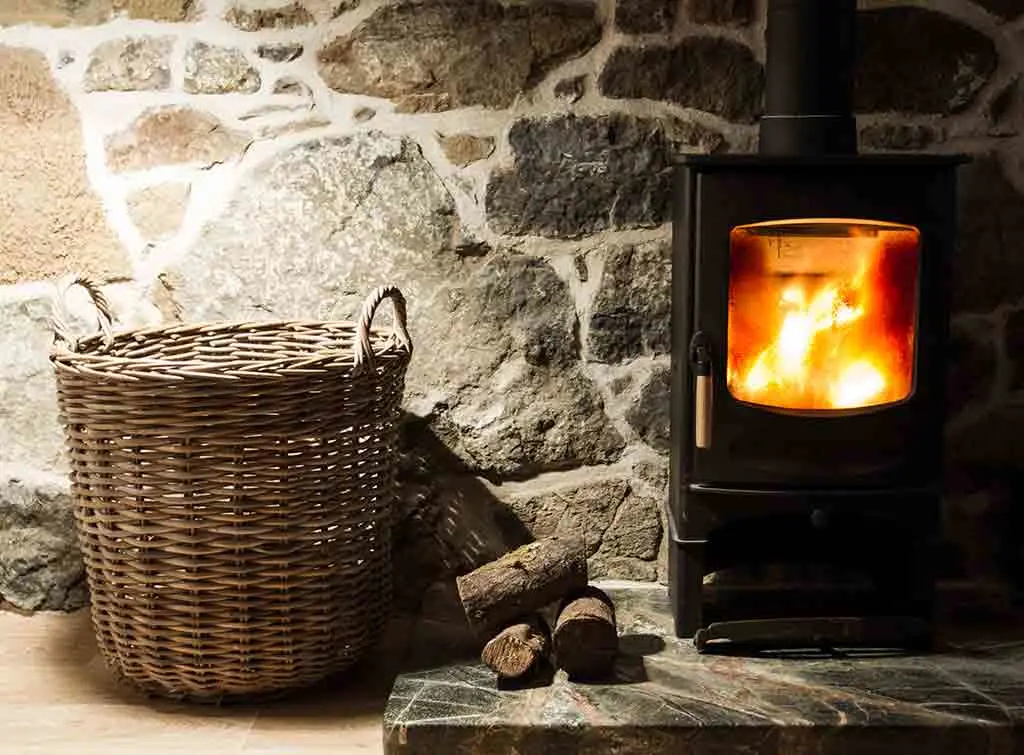
What are the benefits of wood-burning stoves?
There are several reasons why wood-burning stoves have grown in popularity:
They offer a cost-effective, efficient heating solution
They create a charming feature and a cosy atmosphere
They're a low-carbon way to heat your home using renewable fuel
What are the negatives of wood-burning stoves?
However, for a balanced view, it's important to note the negative aspects of wood-burning stoves, too, the key one being cost.
Log burners typically cost around £950. However, Installation could set you back around £2,000.
If you need to form a new fireplace or hearth, your chimney needs to be lined, or you don't currently have a chimney, there'll be added costs on top.
Take a look at our log-burner cost guide for more detailed information.

On Checkatrade, you'll only find trades who meet our high standards and pass up to 12 checks.
Choosing the right log-burning stove for your home
There's more to choosing the right log-burning stove than form and function. Sure, it's crucial your stove pumps out sufficient heat and it has the desired aesthetic, but what else should you consider?
1. Log-burning stove calculator
First of all, you need to work out the size of the stove you need.
Every stove has a kilowatt (kW) output figure. This is the maximum output the stove can achieve. To compare this figure to that of a radiator (the output of which is measured in BTUs), note that 1kW=3,412 BTU.
Calculating the output you need
Divide the volume of your room (width x length x height, in metres) by 15.
This calculation is based on standard insulation specifications. If your room is well-insulated, divide its volume by 20-25, and if it's poorly insulated, divide it by 10.
For example, a standard-insulated living room measuring 5m x 6m with a ceiling height of 2.4m (72m³) will require an output of 4.8kW.
We always recommend consulting with a reputable wood-burning stove company to make sure you make the optimal selection for your home. Search your postcode to find approved specialists in your area.
See the tradespeople we've checked and recommend for your job
2. Do you live in a Smoke Control Area?
Smoke Control Areas, sometimes known as 'Smokeless Zones' prohibit the burning of certain fuels.
This means you cannot release smoke from a chimney, and you can only burn authorised fuel unless using a 'Defra-approved appliance'.
You can be fined up to £1,000 if you buy unauthorised fuel to use in an appliance not approved by Defra. It's therefore worthwhile contacting your local council to find out if you live in a Smoke Control Area.
3. Know the rules
In addition to Smoke Control Areas and the use of authorised fuels, from 2022, all new stoves must comply with Ecodesign standards. These three measures aim to reduce air pollution and promote cleaner energy sources.
In addition, installation should only be undertaken by a certified professional to ensure safe operation and compliance.
ClearSkies certification is the trustmark to look out for within the stove and fireplace industry.
4. Do you have a chimney?
If you want to install a wood-burning stove but don't have a chimney, what are your options?
You can either install a twin-wall external flue (the shiny metal tubes you see on the outside of some homes).
Or, if you don't want a flue, opt for a flueless stove, but expect to pay more for both the stove and the bio-ethanol fuel it burns.
5. What type of home do you live in?
Homes with Mechanical Ventilation Systems need to pay additional attention to the type of wood-burning stove they choose. It's highly recommended to speak with an expert to help select the right type of stove for your home.
6. Design and style
From a style point of view, there are lots of options on the market, making it easy to choose a stove that suits your home and its decor, whether that's traditional, rustic, or contemporary.
When it comes to features, look for a stove that has 'Cleanburn' specification, which burns the gases given off in the first burn through the introduction of additional air. This stops them from escaping up the flue or sooting up the glass.
Similarly, if you see a stove with 'airwash', this means air is blown over the inside surface of the glass to prevent soot from accumulating there.
Contact or pay a trade through Checkatrade and you’re covered by our 12-month guarantee of up to £1,000*

What's the average cost of a log-burning stove?
Supply and installation costs
The cost of a log-burning stove depends on the size and style you select:
A smaller model typically costs around £500
Whereas a larger, more contemporary designscould cost you in the region of £1,500
Installation costs are additional and normally come in at around £2,000.
Running costs
In terms of log-burning stove running costs, wood-burners can save you money on your energy bills - wood costs much less to burn than other types of fuel.
A wood-burner will use, on average, 3.5 cubic meters of wood (if used from mid-October to mid-April). A cubic meter of kiln dried logs costs between £120 - £140, meaning you could be spending between £420 - £490 for the winter. Compared with the cost of gas and electricity, this is a huge saving.
Maintenance costs
You'll also need to factor in log-burning stove maintenance costs. For example, the cost of an annual inspection for your log burner and chimney to reduce the risk of carbon monoixide in your home. Chimney sweep services normally average around £110.
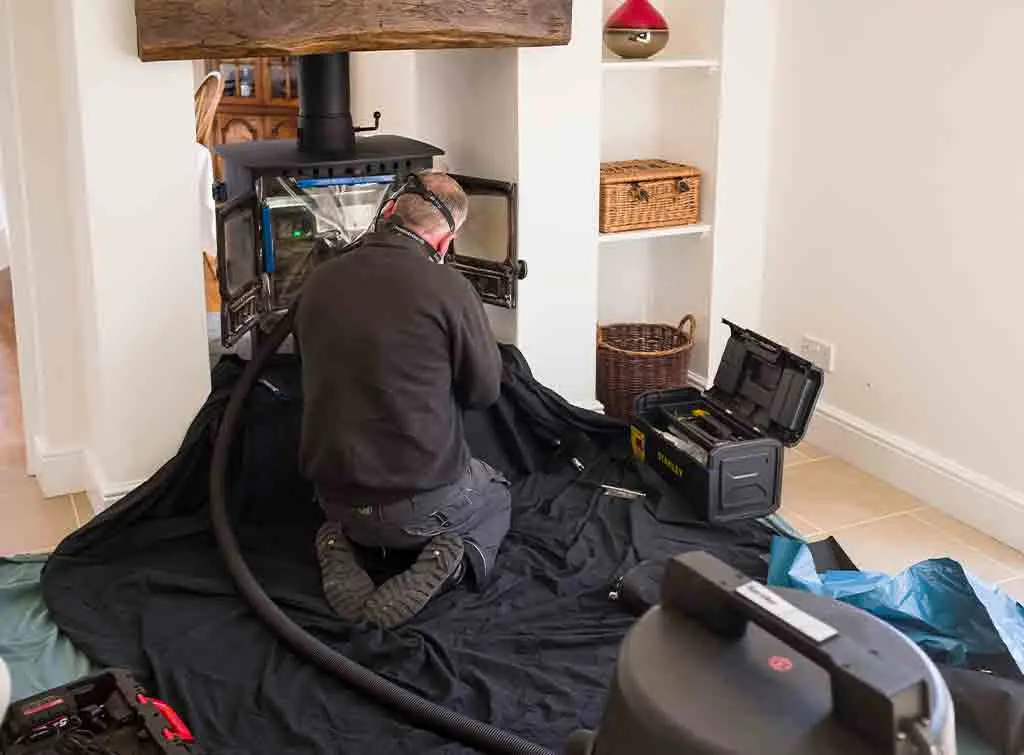
Log-burning stove building regulations
All UK wood-burning stoves must adhere to UK building regulations. There are a number of specifications in this regard, including how the flue is fitted, the size of the hearth, and the distance of the stove to combustibles. Regulations for listed buildings are more complex.
The best way to make sure your log-burning stove meets building regulations is to use a registered installer.
See the tradespeople we've checked and recommend for your job
Using and maintaining your log-burning stove
A key part of using your wood-burning stove correctly is selecting the right type of fuel and keeping the appliance clean.
Fuel suppliers
Never buy logs by weight. Wet logs are heavier, so you may well end up paying for water rather than the fuel.
Drier, denser wood gives a longer and stronger burn. So look for wood with a low moisture content (below 20%) – usually meaning it has been kiln-dried (quickly in an oven) or seasoned (meaning left to dry out naturally undercover).
Hardwoods tend to be better than softwoods for burning, although there’s such a broad range of hardwoods that it’s difficult to generalise.
Expect to pay in the region of £100-£150 for a builder’s merchant bag of logs – most areas have local suppliers, and there are a handful of national retailers. Make sure you have enough space to store the volume of logs you're buying in a dry area.
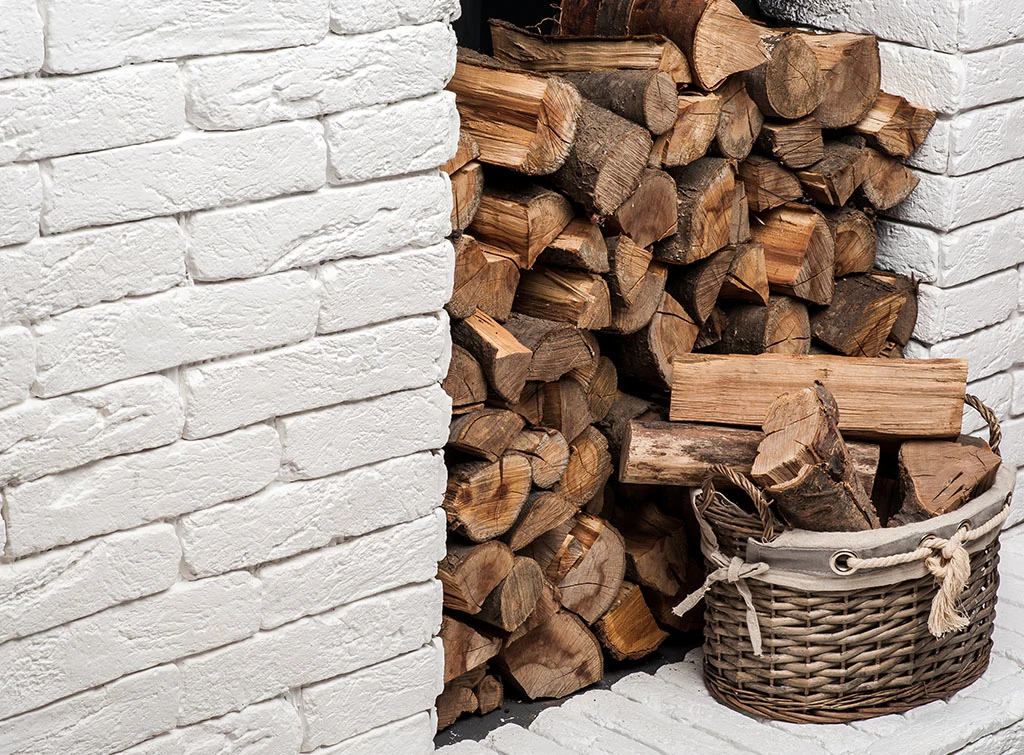
Log burner cleaning
To keep your stove in good working order, don't forget to clean your log burner on a regular basis.
Wood burner glass can be cleaned with a moist cloth dipped in fresh ash
The outside of the stove can be cleaned with a vacuum cleaner with a soft brush attachment
Ash should be removed every few days if using daily
Check the baffle plate for sooty build up
Check the rope seal around the door is in good working order

Find a specialist log-burning stove company in your area
A professional wood-burning stove installer will ensure your new appliance is not only the optimal choice for your home, but that it's installed safely and compliantly.
Find reputable log-burner companies in your area by searching your postcode now.
See the tradespeople we've checked and recommend for your job
More Planning Guides
More Wood / Log Burning Stoves Articles
See the tradespeople we've checked and recommend for your job

